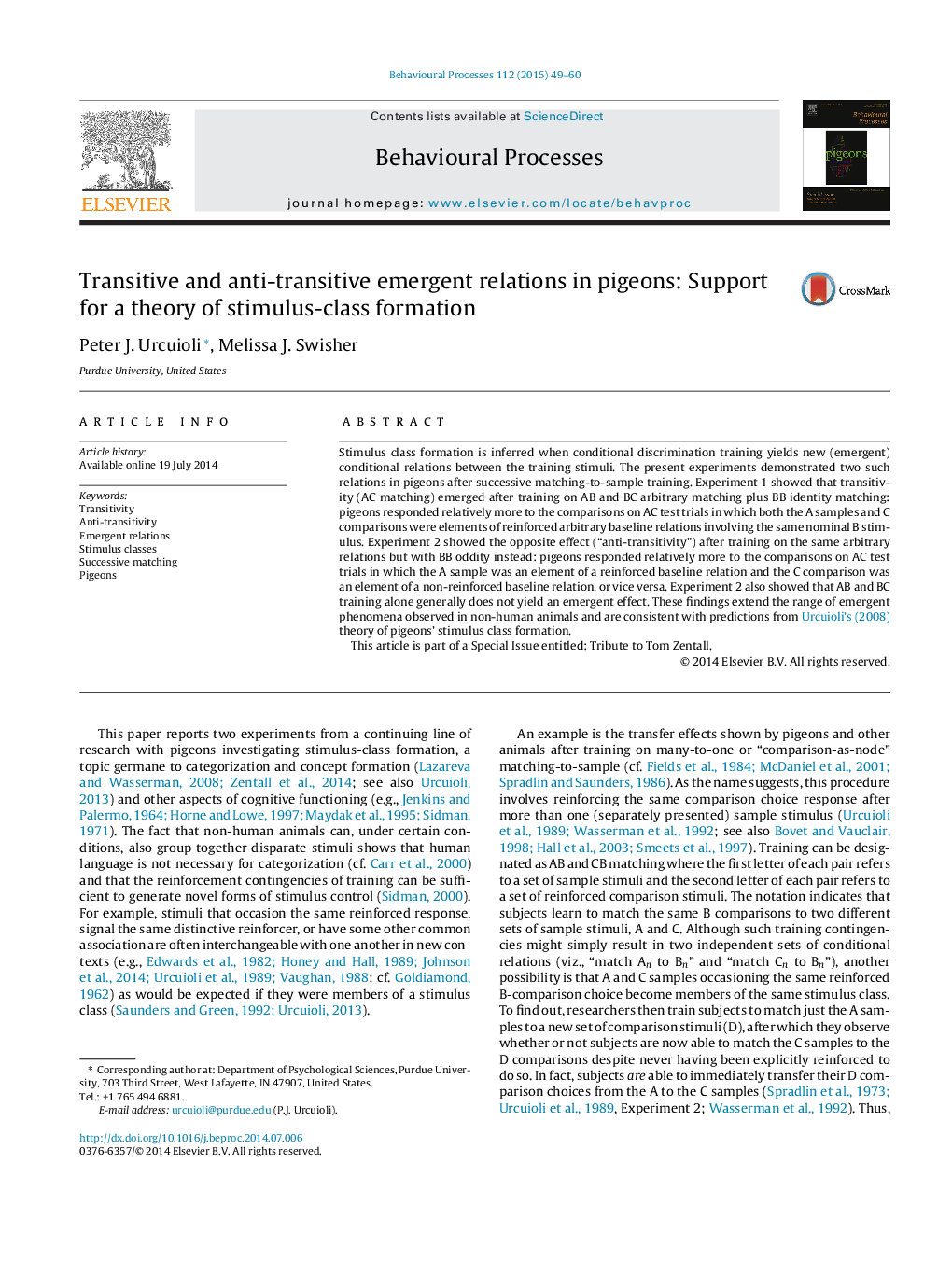| Article ID | Journal | Published Year | Pages | File Type |
|---|---|---|---|---|
| 2426634 | Behavioural Processes | 2015 | 12 Pages |
•Pigeons concurrently trained on AB, BC, and BB-identity successive matching show emergent AC matching (transitivity) in testing.•Pigeons concurrently trained on AB, BC, and BB-oddity successive matching show the opposite of transitivity (emergent anti-transitivity) in testing.•Most pigeons do not show any emergent relations after AB and BC training alone.•Transitive and anti-transitive emergent relations are predicted by a theory of stimulus-class formation (Urcuioli, 2008) that also accounts for other emergent effects recently observed in pigeons.
Stimulus class formation is inferred when conditional discrimination training yields new (emergent) conditional relations between the training stimuli. The present experiments demonstrated two such relations in pigeons after successive matching-to-sample training. Experiment 1 showed that transitivity (AC matching) emerged after training on AB and BC arbitrary matching plus BB identity matching: pigeons responded relatively more to the comparisons on AC test trials in which both the A samples and C comparisons were elements of reinforced arbitrary baseline relations involving the same nominal B stimulus. Experiment 2 showed the opposite effect (“anti-transitivity”) after training on the same arbitrary relations but with BB oddity instead: pigeons responded relatively more to the comparisons on AC test trials in which the A sample was an element of a reinforced baseline relation and the C comparison was an element of a non-reinforced baseline relation, or vice versa. Experiment 2 also showed that AB and BC training alone generally does not yield an emergent effect. These findings extend the range of emergent phenomena observed in non-human animals and are consistent with predictions from Urcuioli's (2008) theory of pigeons’ stimulus class formation.This article is part of a Special Issue entitled: Tribute to Tom Zentall.
